Riding Thailand’s iconic Tuk Tuks: A local guide for foreigners

If you’re new to Thailand, one thing that might pop into your mind is the iconic tuk tuk, the three-wheeled, open-air vehicle buzzing around cities like Bangkok, Chiang Mai, and Phuket. Tuk tuks are more than just transport, they’re a cultural experience, giving you a close-up view of the vibrant streets. But before you hop on, there are a few things you should know or be aware of to make the most of your tuk tuk adventure.
What is a Tuk Tuk?
Tuk tuks are Thailand’s motorised rickshaws, named after the sound their engines make. While they’re often seen as touristy these days, locals still use them for short trips in areas where traffic is dense, especially in cities like Bangkok. Their small size allows them to zip through tight streets, making them a convenient (and adventurous) alternative to taxis.
Riding a tuk tuk is a must-do for anyone visiting Thailand, but there are some key details about the experience that most tourists or expats won’t know right off the bat. From negotiating fares to avoiding scams, here’s your essential guide.

Tuk Tuks in different cities
The experience of riding a tuk tuk can vary depending on the city. In Bangkok, they’re common near tourist areas like Khao San Road and the Grand Palace. Tuk tuks here are fast and furious, weaving through the bustling traffic, so hold on tight! In Chiang Mai, the vibe is a bit more relaxed, and tuk tuk drivers are known for being friendlier. Meanwhile, in Phuket, you’ll find larger tuk tuks, often brightly coloured, and they sometimes double as mini-buses for short distances between beaches or markets.
| City | Tuk Tuk Characteristics | Typical Fares |
|---|---|---|
| Bangkok |
|
|
| Chiang Mai |
|
|
| Phuket |
|
|
How to take Tuk Tuk
How much does a Tuk Tuk ride cost?
Tuk tuk fares can vary, but for short trips in Bangkok, expect to pay anywhere from 100 to 200 baht. In Chiang Mai, it could be as low as 60 baht, while Phuket tends to be pricier, sometimes reaching 300 to 500 baht depending on distance. Always negotiate the fare before getting in, it’s part of the experience! Tuk tuks don’t use metres like taxis, so if you don’t settle on a price beforehand, you might end up paying more than you should.
Are tuk-tuks safe in Thailand?
Tuk tuks are generally safe to ride in Thailand, but like any mode of transport, there are a few safety considerations to keep in mind. Since tuk tuks don’t have seat belts or doors, you’ll want to stay aware of your surroundings and follow some basic safety tips.
Riding a tuk tuk at night can be a fun experience, but make sure you’re in well-lit, busy areas. Some travellers have reported feeling unsafe or overcharged during late-night rides, so it’s best to be cautious about where and when you’re taking one.
Tuk Tuk tips
Regardless of where you’re riding a tuk tuk in Thailand, there are a few universal tips that will make your experience smoother.
Choose the right Tuk Tuk
When picking a tuk tuk, look for one that appears well-maintained, with a driver who’s alert and polite. If the tuk tuk looks too beat up or the driver seems uninterested, it’s best to skip that ride. If you’re in a tourist-heavy area, some drivers might try to take advantage of that. Politely but firmly negotiate your fare, and if they refuse, move on to the next tuk tuk. There are plenty around!
Red flags and common scams
A common scam in Bangkok is when a tuk tuk driver offers you an incredibly cheap fare or even a “free” ride. If the driver offers you a ride for a suspiciously low fare (like 20 baht), be cautious. This is often a scam where they’ll take you to overpriced tourist shops where they earn a commission from your purchases. If you don’t want a surprise shopping trip, politely decline and find another tuk tuk.
Another scam to watch out for is the “Grand Palace is closed” trick. A tuk tuk driver might tell you that a popular attraction is closed for a special event or holiday, offering to take you elsewhere instead. Double-check online or with another local to verify whether the attraction is really closed before falling for this.
For more types of scams you might face in Thailand, check out our top 10 scams in Thailand that you should be aware of.

Always negotiate the fare
We’ve said it before, but it’s worth repeating. Never or ever get into a tuk tuk without agreeing on a price first. The price can vary greatly depending on the city, the distance, and how well you can haggle.
Carry small bills
Drivers don’t always have change for larger notes like 500 or 1,000 baht, so it’s a good idea to carry smaller bills like 20 or 100 baht. This will save you from any awkward moments when it’s time to pay.
Keep an eye on your route
Some tuk tuk drivers might take the scenic route (meaning a longer, more expensive one). Use a map app like Google Maps to track your route and politely ask them to stick to the most direct way.
Avoid peak traffic times
If you’re in Bangkok, try to avoid riding a tuk tuk during rush hour (around 4pm to 7pm). The traffic can be intense, and sitting in a tuk tuk breathing in fumes can get uncomfortable.
Safety first
Tuk tuks don’t have seat belts, so make sure to hold onto the handrails and keep your belongings close to you. In some cities like Phuket, tuk tuks can get quite bumpy on uneven roads, so hang on tight.

Fun facts about tuk-tuk in Thailand
Historical origins: The concept of the Tuk Tuk originated in Japan during the post-World War II era when motorised tricycles were developed to address transportation shortages.
Name etymology: The name “Tuk Tuk” is believed to be derived from the sound of the vehicle’s engine. This nickname was popularised by foreigners who found it easier to pronounce than the Thai term “sam lor kruang,” which means motorised tricycle.
Design and functionality: Tuk Tuks typically have a small open-air cabin that can comfortably seat two to three passengers. Known for their ability to navigate through narrow streets and heavy traffic, making them ideal for urban environments.
Cultural symbol: Tuk tuks have become a cultural symbol of Thailand, often featured in films, postcards, and travel promotions. Though they are seen in other countries (like India and Sri Lanka), Thailand’s tuk tuks are unique in their design and the experience they offer.
Variations across regions: Different countries have their own versions of Tuk Tuks. For instance, in Thailand, you can find “frog tuk tuks” characterised by their rounded fronts resembling a frog’s face, while in India and Sri Lanka, they may be smaller and less robust. Each region’s Tuk Tuk often reflects local aesthetics and functional needs.
Modern adaptations: With increasing environmental awareness, electric Tuk Tuks are becoming more common as a sustainable alternative to traditional gas-powered models. In Thailand, we have MuvMi, the EV tuktuk.
Riding a tuk tuk is an iconic experience in Thailand. Whether you’re zipping through the streets of Bangkok or taking a scenic ride in Chiang Mai, it’s a fun way to immerse yourself in local culture. Just be sure to negotiate your fare, stay alert to scams, and hold on tight for a memorable ride.
Enjoy your tuk tuk adventure and take in the sights as you ride through the heart of Thailand!
FAQs about tuk-tuk in Thailand
How do I ride a tuk-tuk in Thailand?
To ride a tuk-tuk, simply hail one from the street or approach a parked driver. It's essential to negotiate the fare before getting in, as tuk-tuks do not have meters. Confirm your destination and route to avoid any misunderstandings.
Where can I find tuk-tuks?
Tuk-tuks are usually found in busy areas, near tourist attractions, markets, and transportation hubs. They are easily recognizable by their distinctive appearance and sound.
Are tuk-tuks safe?
While generally safe, it's wise to hold onto handrails during the ride and keep an eye on your belongings, especially in crowded areas where theft can occur.
Is it better to take a taxi instead of a tuk-tuk?
Taxis may offer more comfort and have meters for fair pricing, but tuk-tuks provide a unique experience of Thailand's street life. The choice depends on personal preference and the specific situation.
What are some tips for negotiating fares?
Always start by offering about 20-40% less than the initial fare quoted by the driver, especially in tourist areas where prices are inflated. Comparing rates from different drivers can help you get a better deal.
Is tuk-tuk Thai or Indian? Which country invented the tuk-tuk?
The tuk-tuk is both Thai and Indian, though it’s associated with many Southeast Asian countries. While Thailand popularized the name "tuk-tuk," the concept of the auto-rickshaw originated in Japan in the 1930s before spreading to other countries like India and Thailand. India also has a deep tuk-tuk culture, where they’re commonly known as autos.
Why do tuk-tuks have three wheels?
It's for a combination of fuel efficiency, low production costs, and easy navigation through narrow streets.
How safe are tuk-tuks?
Tuk-tuks are generally considered safe for tourists, though they lack seatbelts. Be cautious with traffic, especially in busy areas.
Trending stories about tuk tuk in Thailand
- Phuket tourists engage in steamy street show on tuk tuk
- Patong tuk tuk driver fined after aggressive road confrontation
- Tuk tuk drivers’ street fight goes viral, sparking outrage (video)
Other guide articles on transportation in Thailand
- Transportation guide in Thailand
- Automotive laws and regulations in Thailand
- How to buy a car in Thailand
Latest Thailand News
Follow The Thaiger on Google News:








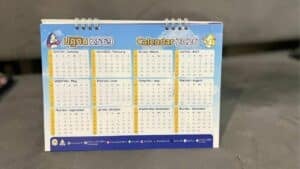

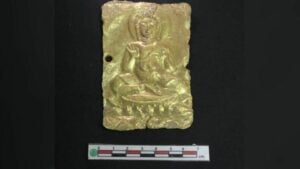

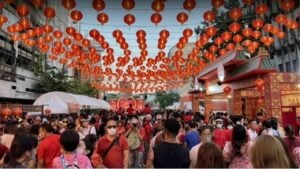

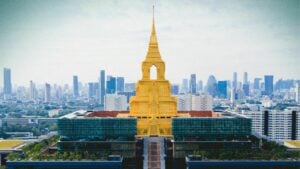











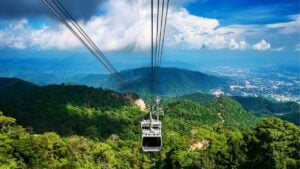

![Where to travel to in Thailand in March [2025] | Thaiger](https://thethaiger.com/wp-content/uploads/2025/03/Guide-Article-Template-3-1-390x220.jpg)



